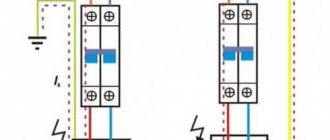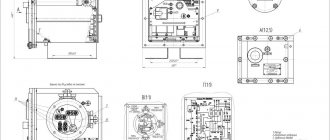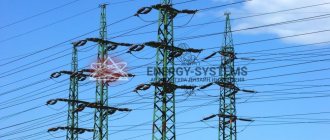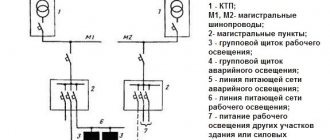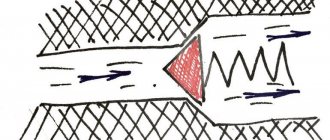The definition of KTP in electrical engineering means a complete transformer substation. The concept of completeness in TP is dictated by the design feature of manufacturing - the production of a full-fledged substation for outdoor installation with a set of working units that are assembled in the form of kits into a single power supply system.
Often, a structure consisting of a housing, electrical components for removing and converting energy, and metering panels is delivered to the installation site in a fully or partially assembled form, which reduces time costs and facilitates the installation process and its commissioning.
Purpose of KTP
Modern PTS allow solving several problems at once:
- Reception of electricity from three-phase alternating current power lines with a nominal voltage of 6 (10) kV and an industrial current frequency of 50-60 Hz.
- Stepwise transformation of the received energy into alternating current with a voltage of 380 V (0.4 kV) and a frequency of 50-60 Hz; one phase out of three is allocated for household consumers.
- Distribution of converted electricity to end users connected via a ring (continuous distribution line in the form of a closed loop) or radial connection scheme.
The capacities of power electrical installations are designed to supply energy to medium and large consumer facilities, including:
- construction sites;
- industrial enterprises;
- residential areas, microdistricts, villages;
- communal and municipal services;
- agricultural and farming facilities.
A wide variety of designs, configurations and structures that fit most correctly into the climatic and technical operating conditions of the complete device allow you to choose an option suitable for a specific facility.
PTS 6-10 kV, what is PTS, characteristics
Complete transformer substation – KTP
KTP - this abbreviation has long been used by any electrician. A complete transformer substation is a switchgear that is closed from outsiders and looks like a carriage, a booth, or a kiosk and is installed in close proximity to the end consumer.
- Voltage for which PTS are designed
- >Power of KTP
- Why have KTP substations become so popular?
- Modern manufacturers of package transformer substations
Inside the package transformer substation there is power equipment (input cables, transformers, dischargers, voltage limiters, externally installed disconnector, protective devices in the form of fuses and load switches, current transformers and outgoing cable lines directly to the consumer), which are energized.
There are also complete transformer substations of kiosk type, dead-end, walk-through or modular design.
Voltage for which PTS are designed
PTS are used to convert voltage from 10 or 6 kV to 0.4 kV, usually designed for voltage. The primary voltage level depends on the suitable electrical network. If the network is designed for a voltage of 10 kV, then KTP 10 is installed at 0.4. If the higher-level network has a voltage of 6 kV, then KTP 6 is installed at 0.4 kV.
In addition to power and voltage, PTS can differ from each other in:
1) Type of power transformers - oil and dry
2) According to the methods of making the neutral of the transformer
3) By arrangement of linear switches 0 single-row and double-row
4) According to the number of power transformers - with one or two transformers.
5) According to climatic version – UHL1-UHL-3
KTP power
The power of a complete transformer substation directly depends on the number of installed transformers and their power. As a rule, no more than 2 power transformers of equal power are installed in a transformer substation. The power of each can be 160, 250, 400, 603, 1000 kVA. To account for transmitted electricity, active and reactive energy meters can be installed on the low voltage side.
Why have KTP substations become so popular?
1) PTS, as a rule, does not have its own foundation, which reduces the time and cost of commissioning work.
2) KTP is a closed electrical installation with anti-vandal systems. It is very difficult for an outsider to enter there, which increases safety and reduces the number of accidents.
3) The equipment is supplied assembled and with a certain set of components. There is no need to buy everything randomly.
4) Simple and convenient operation
5) Modern protection systems reliably protect power equipment from short circuits and overloads.
Modern manufacturers of package transformer substations
1) SESH - Samara Electrical Panel produces about 5-7 different models of PTS, ranging from complete transformer substations of rural type and ending with modular versions of PTS for urban electrical networks.
2) CHEAZ - Cheboksary Electrical Equipment Plant. It has been producing KTP for about 30 years. It is possible to order both indoor and outdoor package transformer substations, even with the introduction of diesel generator sets.
- What are edged boards and how do they differ?
- What is composite tile
- Characteristics of planed square timber
- What do you need to know about clinker bricks for facades?
- What you need to decorate your kitchen
- Modern ventilation, what to pay attention to
Operating conditions for complete transformer substations
Full uninterrupted operation of the installation with minimal losses during the transmission of electricity is possible subject to the rules of installation, commissioning and conditions corresponding to the climatic design in accordance with GOST 15150 U (moderate) or UHL (moderately cold):
- operating temperature range from -45°С to +45°С (for current converters with oil insulation);
- operating temperature range from -1°С to +40°С (for current converters with dry insulation);
- atmospheric pressure – 86-106 kPa;
- relative air humidity – up to 80% (at air temperature up to +20°C);
- wind gusts up to 36 m/s.
KTPs are designed to be located at an altitude of up to 1 km relative to the sea line. In practice, there are isolated cases of exceeding this parameter, but manufacturers are not responsible and do not provide warranties for such situations.
It is strictly forbidden to operate the installation:
- during seismic activity;
- in explosive environments;
- when there is dust in the air that transmits current discharges;
- under conditions of a high content of chemically active volatile compounds and vapors, which have a destructive effect on the metal and insulating materials of the product.
Installation work consists of placing a pre-assembled and factory-assembled station, equipped with dedicated transport and lifting devices, on a flat surface made of brick or concrete. Before commissioning, a final audit of all power plant complexes is carried out. The service life of the unit is at least 25 years.
Design feature:
Complete transformer substations are produced in external or internal versions for voltages up to 10 kV with a power from 100 to 6300 kVA and consist of:
- high voltage switchgear (6-10 kV) based on UVN, Eltima switchgear, Eltima Light*;
- low voltage switchgear (0.4; 0.69 kV) based on Assol NKU;
- power fireproof transformer with cast insulation of the T3R, TS(Z/ZGL) series or oil TM(G);
- busbars;
- modular building (if necessary);
- automatic control system, communication and telemechanics;
- operational direct current systems;
- AIIS KUE.
* It is possible to use monoblocks from ABB, Schneider Electric, Siemens and others at the request of the Customer or if it is necessary to ensure compact placement
The following additional equipment can be installed in buildings and premises of KTS:
- UKRM with automatic cos j control
- supply and exhaust ventilation with the creation of excess pressure in the TP with air intake from a height of 20m or more
- automatic gas fire extinguishing system
- fire alarm and fire warning system
- security alarm system
- access control and management system
- CCTV system
- telephone communications.
The following features can be implemented in KTP-ELM:
- control of electric motors 0.4-10 kV, both local and through automated process control systems,
- ATS with parallel operation of inputs during restoration
- transfer of information to higher-level automation systems, both about the state and operating parameters of the main equipment, and about the premises and technological equipment of the transformer substation;
- equipment self-diagnosis.
Symbols of KTP
Explanation of symbols includes the following parameters:
- type of execution;
- connection type;
- transformer power;
- letter designation of the product;
- classification of input from the HV side;
- classification of output from the LV side;
- number of transformers used;
- HV voltage ratings;
- LV voltage ratings;
- climatic implementation according to GOST 15150 and placement category.
Manufacturers reserve the right to change (add or delete) some product data.
KTPSN, KTPSNV, KTPNS
They are used for their own power supply at power plants of various types, as well as gas compressor stations and enterprises associated with the processing of nuclear power plant waste. The KTPSN has a TSZGL power transformer installed, in which cast geafol insulation is used as a winding. Cabinets with switches (BA), blocks and devices, as well as relay protection units and control units are also installed. Input – cable.
All of the above types of substations are equipped with a special neutral for TN-C grounding systems (solidly grounded low-voltage neutral).
You can order and buy complete transformer substations in Moscow at affordable prices from manufacturers in full factory readiness or dealers who will install and assemble the equipment with a guarantee and subsequent maintenance.
KTP design
Traditionally, a package transformer substation is a set of component parts distributed in localized modules, which are combined into a common housing. Based on their structural components and location, stations are divided into ground-based, mast-based and integrated. The first ones are equipped in cases made of metal, reinforced concrete or insulated sandwich panels. Mast ones are placed on vertical poles and can have a lightweight metal structure with partially open elements. To make technical work accessible, a special staircase and platform are provided.
To service the station there are doors or swing gates with a central lock and a locking system. The body is equipped with technical openings and hidden blinds to organize natural thermoregulation and ventilation of the system.
Types of transformer substations
Power 25 - 2500 kVA
Dead-end complete transformer substations have a connection to only one high-voltage transmission line. Pass-through - connect to two electrical lines.
A kiosk-type transformer substation is one of the most common types of package transformer substation. The housing of such a substation is assembled from strong metal. They have good safety indicators and excellent protection from environmental influences.
Outdoor installations are insulated substations. The body is covered with special panels called “sandwich”. They give the substation good protection under severe climate conditions and are equipped with ShchO-70 panels and KSO cameras. These substations are widely used in the northern regions of the Russian Federation.
Block complete transformer substation - the housing is made of concrete blocks. The concrete building consists of an underground and above-ground block.
Complete in-shop transformer substation is intended for installation exclusively in enclosed spaces and is not suitable for work in an open environment. Our plant manufactures KTP-VC of various types to suit specific customer needs and budgets.
Mast transformer substations are used to supply electrical energy to a certain agricultural facility; these transformer substations have an open design.
Pole substations must be installed on special power transmission line support poles.

